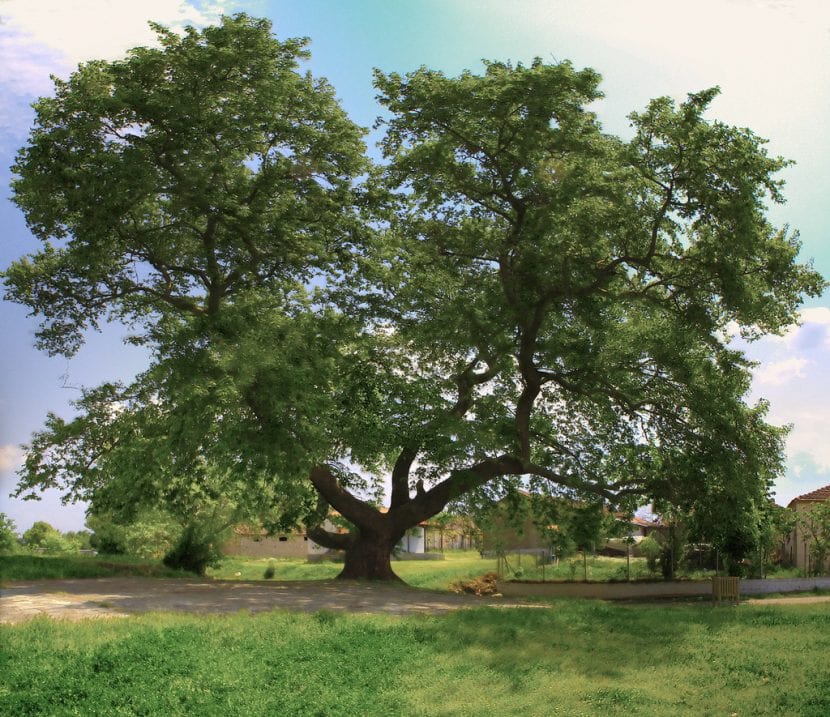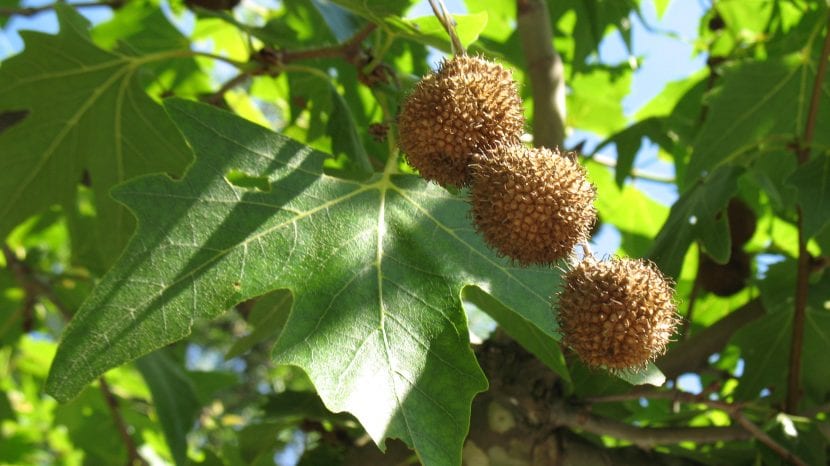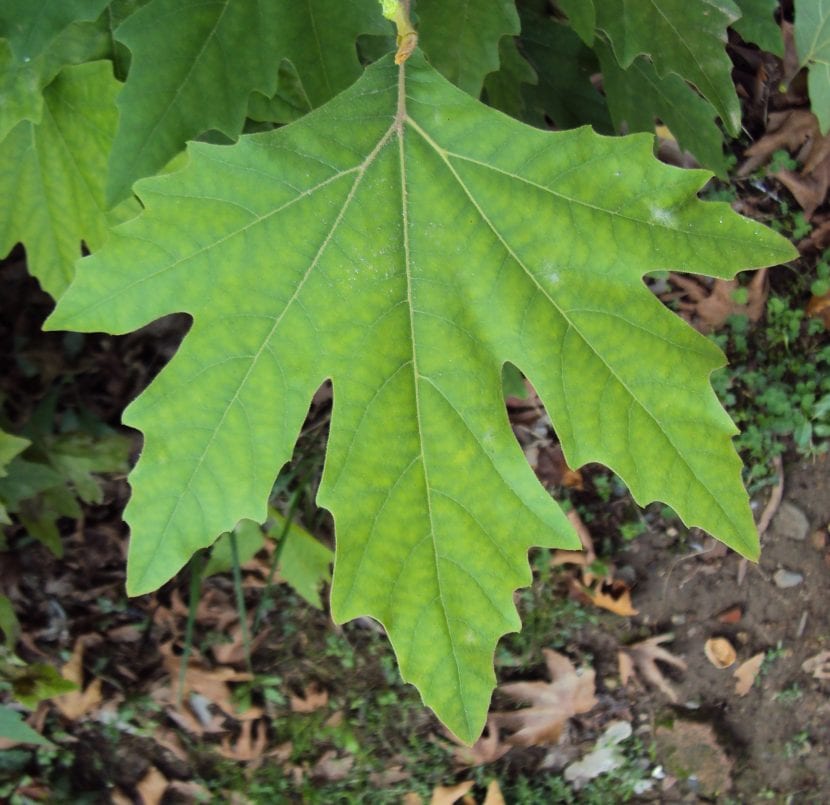
If you have a large garden in an area that enjoys a temperate climate with frosts and you need a tall tree that provides good shade, then we are going to introduce you to the platanus orientalis, an imposing plant.
It is also very decorative, since its leaves are palmate, green during most of the year except in autumn, which change. Dare to know everything about him.
Origin and characteristics

Our protagonist is a deciduous tree native to Eurasia whose scientific name is platanus orientalis, and that is known like oriental banana or oriental banana. It has a rapid growth rate, being able to exceed 30 meters in height. Its trunk widens as it ages, and reaches 1m in diameter.
The leaves are simple with 5 lobes, alternate and large up to 25 centimeters. These in autumn turn yellow or yellow-orange. The flowers are grouped in globose inflorescences and are gathered in groups of 2 to 6. The fruit is rounded and covered by very short "spikes" that do not do any damage.
What are their cares?

If you want to have a copy, we recommend that you provide it with the following care:
Location
Due to its characteristics and needs, it is a tree that has to be outside, in full sun and as far as possible - ten meters or more - from pipes, paved floors, etc.
Earth
- Garden: grows in all types of soils, but prefers those that have good drainage and are fertile.
- Flower pot: It is not a plant to have in a container, but it can be cultivated that way for several years, with a universal growing medium.
Irrigation
It will depend on the climate and the location, since apart it must be taken into account that it does not like waterlogging. But to give you an idea, you should know that during the summer you have to water it 3-4 times a week, while the rest of the year you have to water less, like one or two on a weekly basis.
Subscriber
We don't always think about the subscriber, but this is a mistake. If you want to have a healthy tree, it is important that you fertilize it from the beginning of spring to the end of summer. with ecological fertilizers, at least once a month or whenever indicated on the package if it is the case. In this way, you will not miss anything and will be able to look spectacular.
Multiplication

El platanus orientalis multiplies by seeds in spring. The way to proceed is as follows:
- You must first fill a seedling tray with universal growing medium and water thoroughly.
- Then, you place a maximum of two seeds in each socket and cover them with a thin layer of substrate so that they are not exposed to direct sunlight.
- Then, sprinkle with copper or sulfur to prevent the growth of fungi, which could spoil both the seeds and the newly germinated seedlings.
- Finally, water again, this time with a sprayer, so that the copper or sulfur settles well, and place the seedling tray outside, in semi-shade.
Thus, the first ones will germinate after 1 or 2 months at most.
Pruning
Although it supports pruning well, does not need it. What I do advise to remove are dry, diseased or weak branches since they could harm someone if they fall or be a source of infection that could end up damaging the tree.
Plagues and diseases
In general it is very resistant. If the growing conditions are right you will not see any insects or microorganisms on it. Now, if something is wrong (for example, if the summer is being especially hot and dry, or if, on the contrary, a winter is excessively cold and it is the first year that it is with you) it can be affected by:
- Mealybugs: cottony type or limpet type. They are sap-sucking insects that cling to young leaves and stems. They are fought with an anti-mealybug insecticide.
- Mushrooms: such as phytophthora or mildew. They appear when there is high humidity, whether it is caused by very frequent rains or by excessive watering. If you see a gray or white powder or mold, treat it with fungicides.
Planting or transplanting time
You can plant your platanus orientalis in the garden in spring, as soon as the frosts have passed. In the case of having it in a pot, you must transplant it every two years, but remember that sooner or later it must be in the ground to continue growing.
Rusticity
Withstands frosts down to -15ºC, maritime climates (not tropical) and pollution. Come on, what has been a very, very interesting tree for its adaptability and beauty 🙂.

What do you think? I hope you liked what you read about it platanus orientalis, and that you dare to get one if you have enough space and the right climate.
Can the tree be preserved by treating it for what not to do with the pollen pellet? It is impossible to live with this seed that flies in September. +
Hello Maria Laura.
No, there is no treatment that prevents a plant like this from giving off flowers or fruit. The production of these is part of their biological cycle, that is, their genetics, and nothing can be done against that.
In case of allergy, or if you suspect an allergy to its pollen, it is advisable to go to an allergist, as there are medications that can alleviate the symptoms.
Greetings.